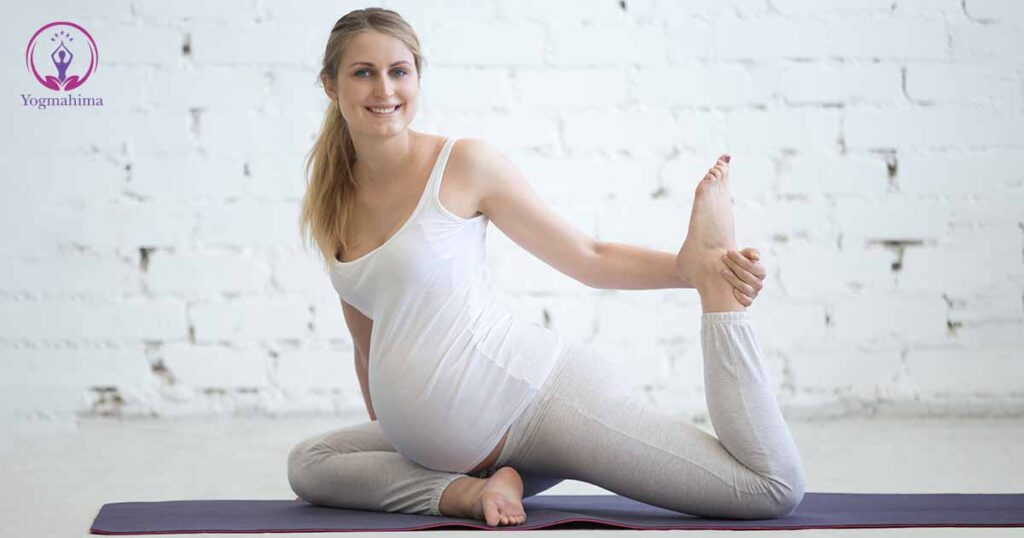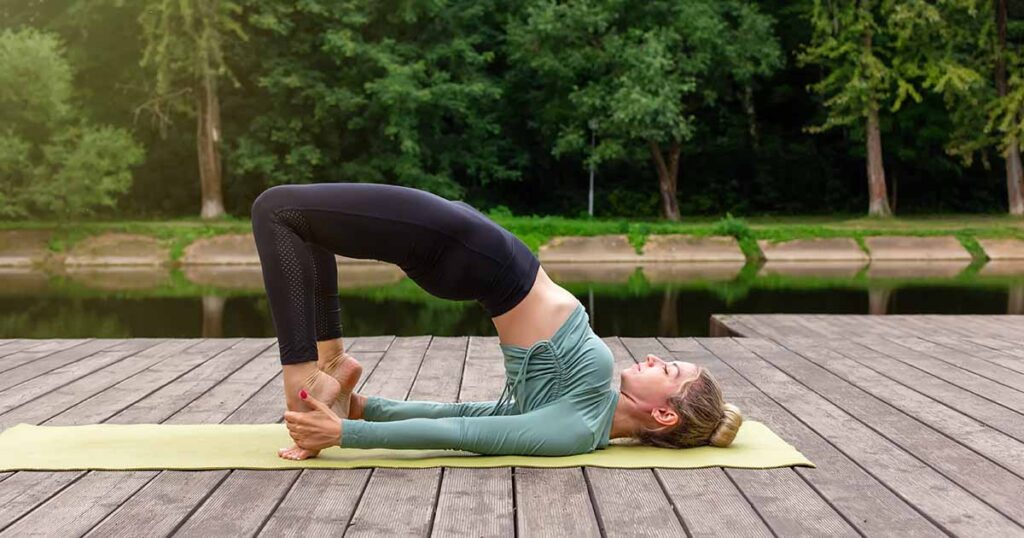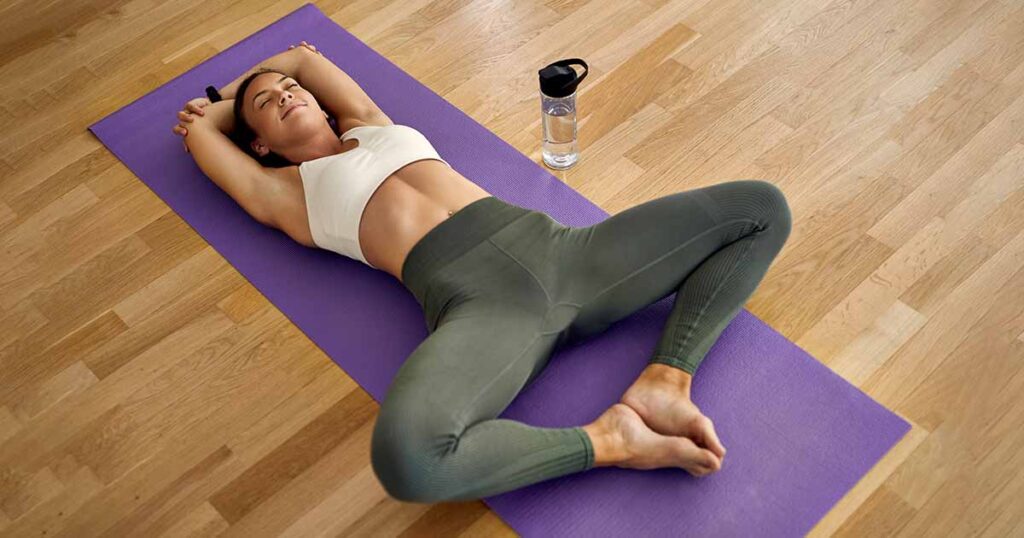
Today, you have indeed put your bodies at stake. You have entirely forgotten to take care of your health. The hectic schedule, unhealthy lifestyle, and bad diet have led to poor functioning of the body, resulting in hormonal imbalance. This hormonal imbalance is primarily visible in women in the form of PCOD. Living with PCOD can be difficult, but there is nothing to lose hope; there are natural ways to improve the condition. One such natural cure is yoga; do a daily yoga routine for PCOD and see positive results. Yoga for PCOD will not only enhance your menstrual problem but will also improve your overall well-being.
Read this article to learn five simple yoga routines to manage PCOD at home.
Polycystic Ovarian Disorder (PCOD) is a hormonal imbalance that affects 1 in 10 women of reproductive age. The symptoms of this disease can be seen in the form of irregular menstrual cycle, excess hair growth, weight gain, and multiple cysts in the ovary.
Benefits of Yoga for PCOD
Yoga is highly beneficial for PCOD as it helps regulate hormones, aids in weight management, reduces insulin levels, and promotes overall physical and mental well-being. There is a specific pranayama for PCOD, breathing exercises targeting the endocrine system, and stress reduction in yoga. In various studies, it is recommended to do yoga to regulate hormones.
Here are five yoga poses that can help manage PCOD
1. Malasana (Garland Pose)

This pranayama strengthens the pelvic and abdominal core while opening the hips, improving metabolism, and aiding digestion.
Instructions
- Begin in a standing position with your feet slightly wider than hip-width apart.
- Bend your knees and lower your hips into a squat, keeping your heels grounded.
- Bring your palms together at your chest in a prayer position, and use your elbows to press your knees outward gently.
- Lengthen your spine and relax your shoulders, holding the pose for 30-60 seconds before releasing.
2. Setu Bandhasana (Bridge Pose)

It is a great stress relief yoga for PCOD while reducing tension in the back muscle. This pose also helps with reproduction issues and improves lung capacity.
Instructions
1. Lie on your back with your knees folded and feet hip distance apart.
2. Place your hands and palms beside your body.
3. Inhale and lift your feet towards the ceiling, engaging your glutes and pressing your feet.
4. Keep your thighs parallel and all corners of the feet pressed together on the floor.
5. Hold in this pose for 30-60 seconds, breathing deeply, and release on an exhale.
3. Supta Baddha Konasana (Bound Angle Pose)

This restorative pose reduces menstrual discomfort and calms the nervous system. This is excellent yoga for irregular periods.
Instructions
1. Lie on your back with your arms at your side.
2. Bend your knees and bring the soles of your feet together, allowing your knees to fall open.
3. Find a comfortable stretch in your inner thigh.
4. Deep breath and relax.
5. Hold in the position for 3-5 minutes.
4. Bhujangasana (Cobra Pose)

This yoga pose strengthens the spine, enhances blood circulation in the pelvic region, and tones the abdominal muscle.Experts suggest this yoga for reproductive health.
Instructions
1. Lie with your face down on the floor with your legs extended and your feet on the floor.
2. Keep your hands under your shoulder and elbows close to the body.
3. Inhale and lift your chest, engaging your back muscles.
4. Keep your shoulder relaxed; don’t put pressure on your lower back.
5. Hold for 15-30 seconds before releasing on exhale.
5. Savasana

This simple yoga pose helps to relax the body and mind and relieves stress and tension. Do this yoga to regulate hormones in the body.
Instructions
1. Lie on your back with your legs not touching together.
2. Place your hands on both sides and your palms facing up.
3. Close your eyes, breathe slowly.
4. Focus on relaxing each part of your body, starting at the top of your head and working your way down to your feet.
5. Stay in the pose for five to fifteen minutes.
Conclusion
Including these five yoga poses in my daily routine to help fight against PCOD, decrease testosterone levels, and promote your overall well-being. Maintaining a daily yoga routine for PCOD can promote relaxation and help you cure the symptoms of PCOD. Consult your doctor before starting a new exercise regimen, especially if you have any pre-existing health concerns.
Don’t think you are alone in your fight against PCOD. A professional yoga school, Yogmahima, is there to assist you in every step.
Frequently Asked Questions (FAQs)
Q1: How can I permanently cure PCOD?
A1: PCOD cannot be cured entirely, but you can control the symptoms of PCOD through a combination of lifestyle changes, healthy eating habits, and including daily yoga routine for PCOD.
Q2: Are there any poses in yoga for irregular periods?
A2: There are many poses in yoga for irregular periods, like malasana, ustrasana, adho mukha svanasana, and dhanurasana.
Q3: Can I reduce fat in PCOD?
A3: Yes, you can reduce fat by making changes in your lifestyle, doing exercises, and yoga. Reducing body fat can help manage PCOD symptoms.
Q4: Name the best yoga for hormonal balance.
A4: Surya namaskar, matsyasana, baddha konasana, marichyasana, etc. are a few of the best yoga for hormonal balance you can include in your daily yoga routine for PCOD.
Q5: Which pranayama for PCOD can I do?
A5: Kapalabhati is the best pranayama for PCOD. This technique helps to fight metabolic syndrome (MS) and polycystic ovarian syndrome (PCOS).



No Comments yet!